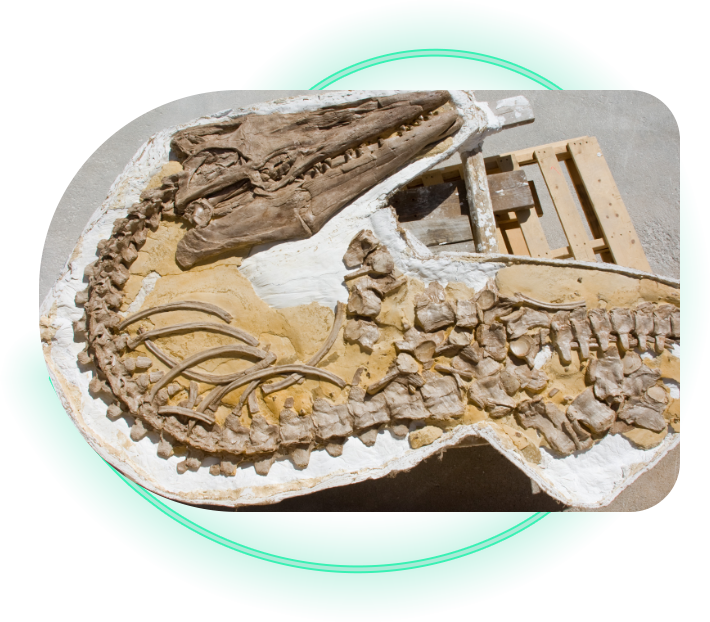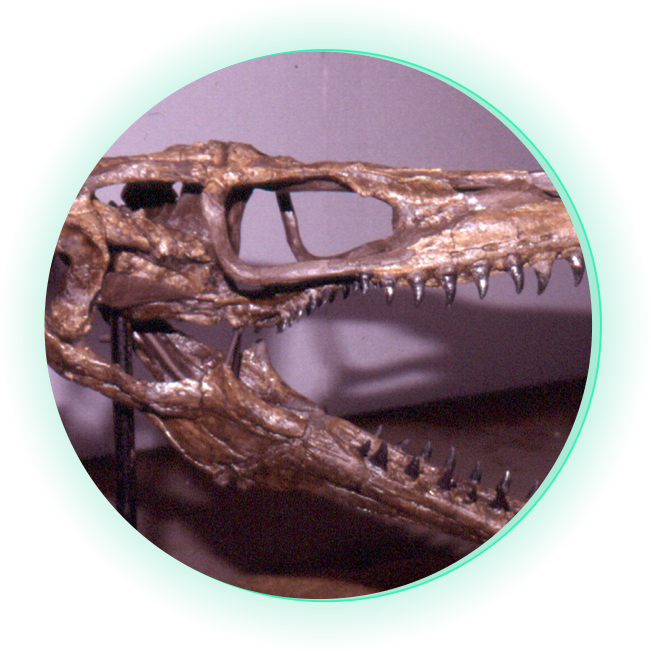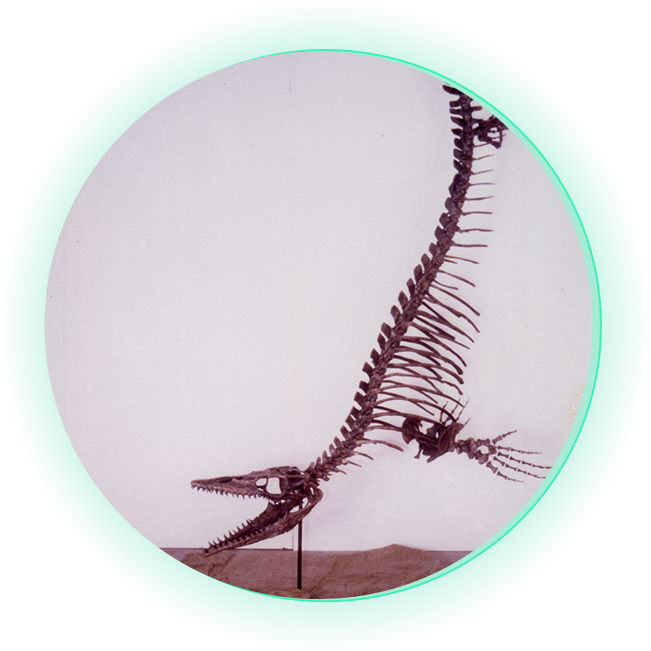Favorite CollLection Triceratops Real Figure Keyring
$11.95

Mosasaurs were, literally, marine lizards. These large, extinct “sea monsters” were closely related to the living monitor lizards like the Nile Monitor (Varanus niloticus) and the Komodo Dragon (Varanus komodoensis). Mosasaurs were probably derived from an early Cretaceous (120MYA) form called Opetiosaurus. They thrived throughout the Early Cretaceous (90 – 65MYA) and have been found in marine sediments from Belgium to Japan, and from Antarctica to North America. Mosasaurs, like dinosaurs, became extinct at the K-T Boundary,65 million years ago.

The Niobrara Chalk and the Pierre Shale have produced some of the best preserved and most complete fossil Mosasaurs. Specimens range in size from the 12′ long Clidastes, to the 20′long Plioplatecarpus up to monsters like the 30′ Tylosaurus and 40′ Mosasaurus.

These Mosasaur species have much in common. They all have much diminished fore and hind limbs, probably useful in steering. They all had powerful tails, that provided the propulsive force to move them through the water. The tail of a Mosasaur is nearly half the length of the complete animal.
Mosasaurs were all equipped with a large mouthful of crocodile-like teeth used for capturing their prey. Most Mosasaur skulls show “joints” that allowed for movement of individual skull bones, widening the gape and allowing Mosasaurs to manipulate their prey, perhaps turning items for easier swallowing.